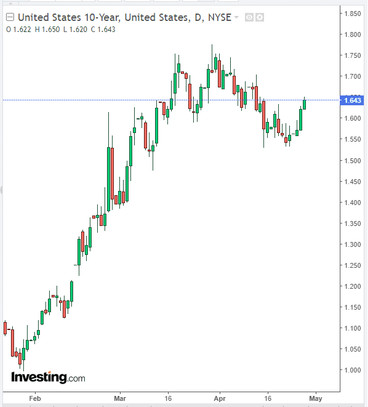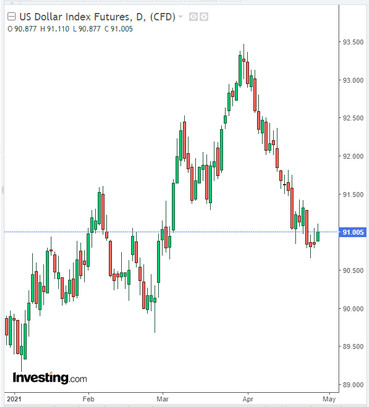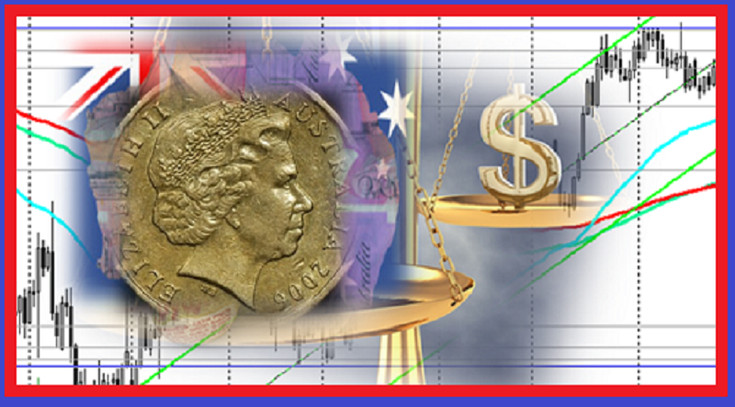As the Australian Bureau of Statistics reported at the beginning of the Asian session today, the consumer price index CPI in the 1st quarter of 2021 fell to 0.6% (against the forecast and the previous value of 0.9%). At the same time, the core inflation index of the Reserve Bank of Australia decreased to 0.3% in the 1st quarter of 2021 (against 0.4% in the previous quarter and the forecast of 0.5%). Although, in annual terms, the inflation rate rose from 0.9% to 1.1%, which also turned out to be lower than the 1.4% forecast, the Australian dollar reacted with a sharp decline, including against the US dollar.
Inflation indicators, along with data on GDP and the labor market, are key for the RBA in determining the parameters of its monetary policy. The data suggests low inflationary pressures in the Australian economy, which will keep the RBA from considering raising the interest rate for a long time to come, which is a negative factor for the AUD.
Immediately after publication (at 01: 30 GMT) by the Australian Bureau of Statistics of the inflation indicators pair AUD/USD fell by 40 points to 0.7726 (today's low), testing the important short-term support level 0.7740 (see Technical Analysis and Trading Recommendations).
At the time of publication of this article, the AUD / USD pair remains in the zone of this support level, nevertheless maintaining a tendency to develop upward dynamics.
Meanwhile, the US dollar strengthened during today's Asian session amid rising yields on US government bonds, while market participants await the results of the Fed meeting, which should end today with the publication of the interest rate decision at 18:00 (GMT).
The rate is widely expected to remain at 0.25%. Nevertheless, during the period of publication of the decision on the rate, volatility may sharply increase throughout the financial market, primarily in the American stock market and in the dollar quotes, especially if the decision on the rate differs from the forecast or unexpected statements are received from the FRS leadership. Powell's comments may affect both short-term and long-term USD trading.
According to the Conference Board data released on Tuesday, in April the consumer confidence index in the USA rose to 121.7 against the revised value of 109.0 in March (the forecast of economists was 113.0). This is yet another piece of evidence that the American economy is recovering rapidly.
On Thursday (at 12:30 GMT) a whole block of important macro data on the US will be published. U.S. GDP is expected to grow 6.5% (year on year) in Q1, in line with Q4 2019 levels. Further acceleration of economic activity suggests that the US economy as a whole has reached pre-crisis levels of real GDP.
At the same time, Fed officials are likely to keep loose monetary policy in place, but update their forecasts in a positive direction, given the recent strong macro data. Economists predict that the Fed will begin phasing out asset purchases in the first quarter of 2022, and will raise rates at the end of 2023.
Investors are eager to hear from Powell his opinion on the future plans of the Fed for this year, counting on his tougher rhetoric. However, if he repeats his earlier words about "balance of risks" and "close monitoring of the economic situation", confirming the intention to keep the parameters of the Fed's monetary policy unchanged, then investors betting on the growth of the dollar may be disappointed in expectations and resume selling the dollar. The restraining fact of the dollar's fall in this situation will be the resumed growth in the yield of US government bonds and the still alarming situation with the spread of coronavirus, including in the United States, despite the relatively high rates of vaccination in the country.

*) At the time of publication of the article, the DXY dollar index was near 91.00 mark, 13 points above the opening price of the trading day.






